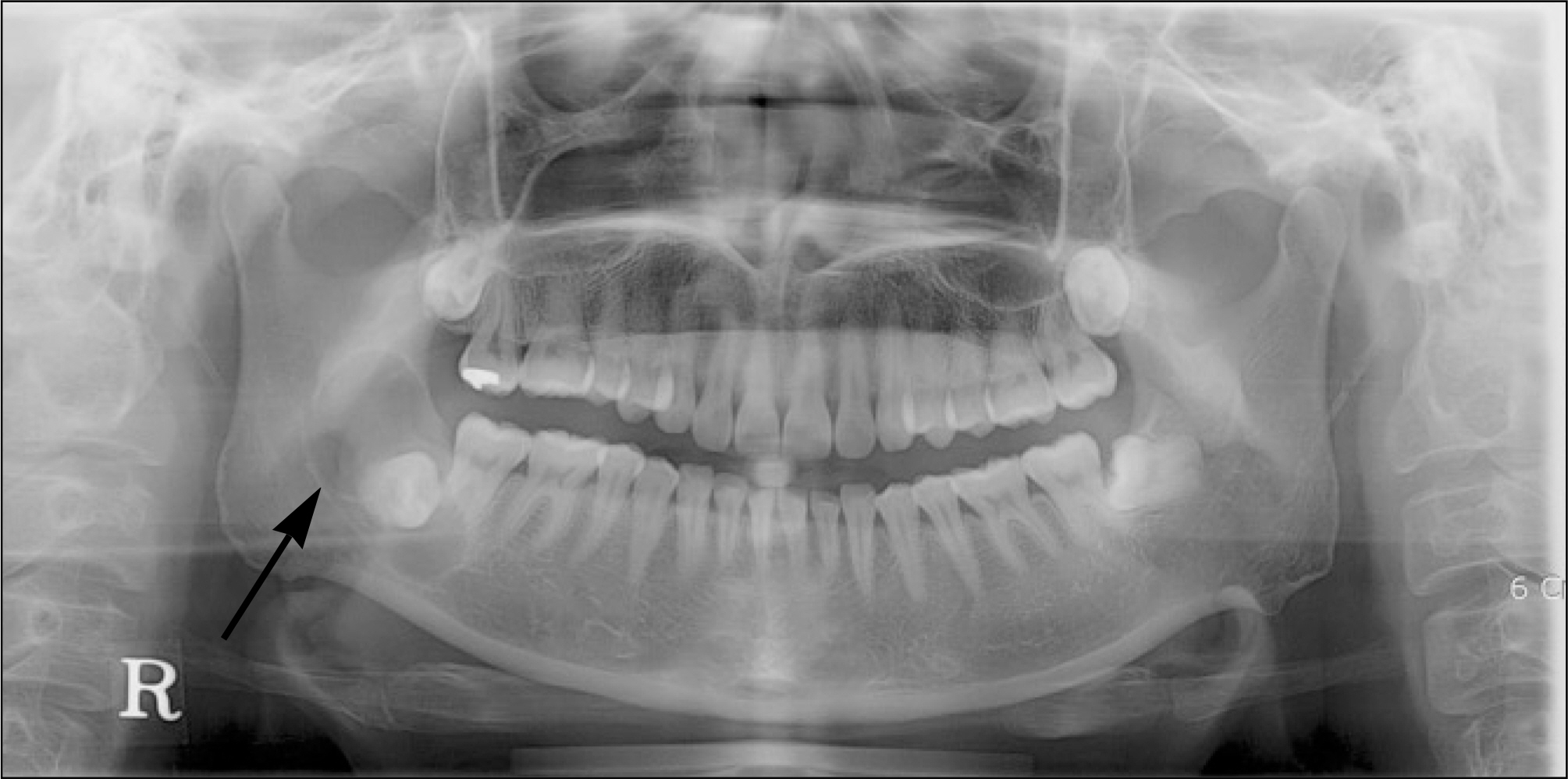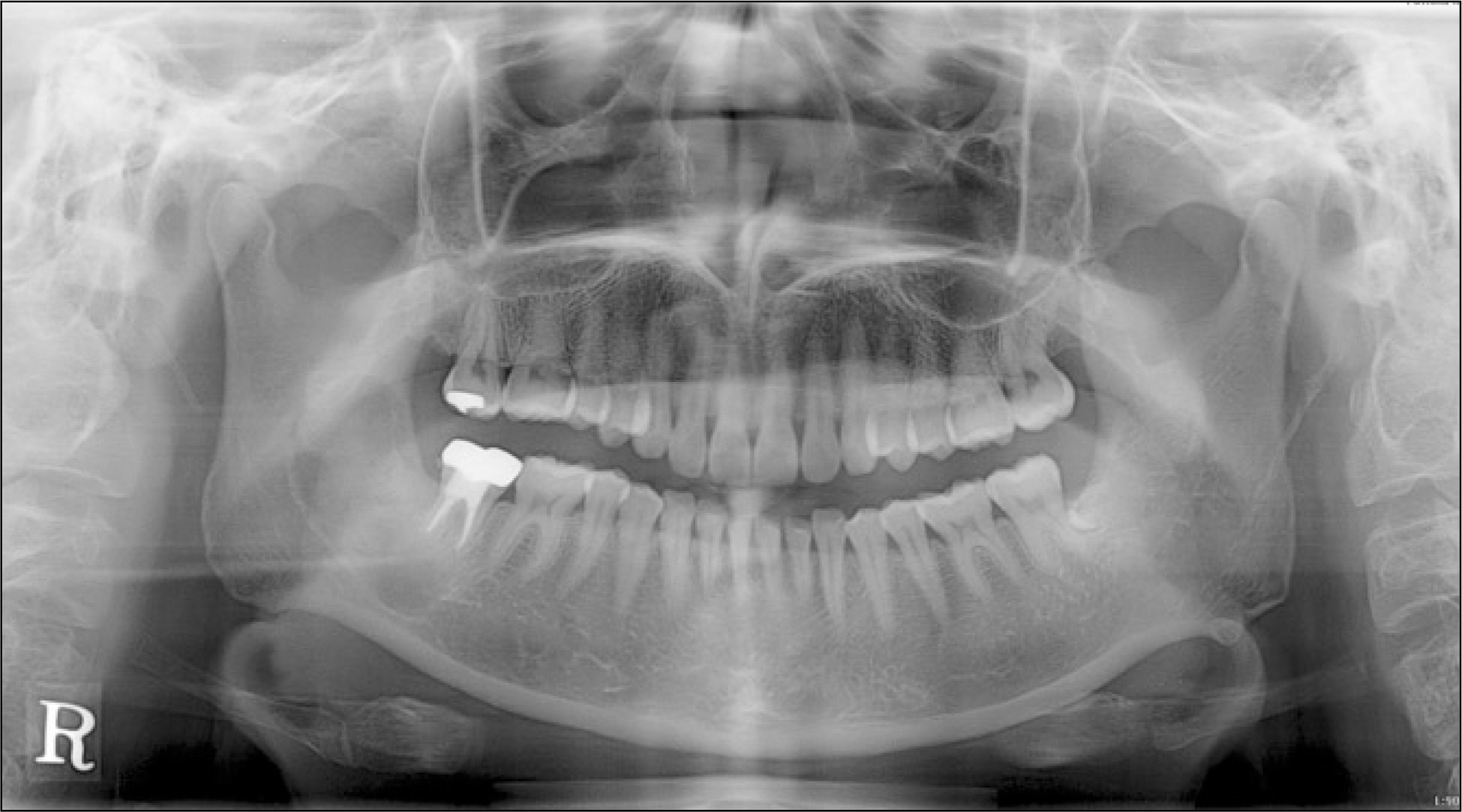J Korean Assoc Oral Maxillofac Surg.
2010 Jun;36(3):211-213. 10.5125/jkaoms.2010.36.3.211.
Glandular odontogenic cyst of mandible: case report
- Affiliations
-
- 1Department of Oral and Maxillofacial Surgery, College of Dentistry, Yonsei University, Seoul, Korea. kimoms@yuhs.ac
- 2Department of Oral Pathology, College of Dentistry, Yonsei University, Seoul, Korea.
- 3Oral Cancer Research Institute, College of Dentistry, Yonsei University, Seoul, Korea.
- KMID: 2189950
- DOI: http://doi.org/10.5125/jkaoms.2010.36.3.211
Abstract
- Glandular odontogenic cyst (GOC) is an intraoral cyst originated from serre remnants which has incidence of rare frequency. Only 111 cases have been reported since Gardener first introduced it in 1987. The clinical features are the following components: cortical bone thinning, locally aggressive root resorption, non-painful swelling. The following recurrences rate are 64.3% in conservative treatment, and 0% in wide excision for instance, segmental or marginal mandibulectomy. So, its prognosis is similar to that of odontogenic keratocyst and ameloblastoma. Therefore, periodic recall follow ups are essential to detect disease recurrence. Here, we will report the first case of GOC diagnosed in our department considering with references. And we share this treatment experience because these aggessive lesions may be misjudged for simple dental cyst.
Keyword
MeSH Terms
Figure
Reference
-
References
1. Krishnamurthy A, Sherlin HJ, Ramalingam K, Natesan A, Premkumar P, Ramani P, et al. Glandular odontogenic cyst: report of two cases and review of literature. Head Neck Pathol. 2009; 3:153–8.
Article2. Macdonald-Jankowski DS. Glandular odontogenic cyst: systematic review. Dentomaxillofac Radiol. 2010; 39:127–39.
Article3. Oliveira JX, Santos KC, Nunes FD, Hiraki KR, Sales MA, Cavalcanti MG, et al. Odontogenic glandular cyst: a case report. J Oral Sci. 2009; 51:467–70.
Article4. Kaplan I, Anavi Y, Hirshberg A. Glandular odontogenic cyst: a challenge in diagnosis and treatment. Oral Dis. 2008; 14:575–81.
Article5. Kramer IR, Pindborg JJ, Shear M. The WHO histological typing of odontogenic tumours. A commentary on the second edition. Cancer. 1992; 70:2988–94.6. Kaplan I, Gal G, Anavi Y, Manor R, Calderon S. Glandular odontogenic cyst: treatment and recurrence. J Oral Maxillofac Surg. 2005; 63:435–41.
Article
- Full Text Links
- Actions
-
Cited
- CITED
-
- Close
- Share
- Similar articles
-
- Glandular odontogenic cyst : Report of three cases
- A huge glandular odontogenic cyst occurring at posterior mandible
- An Unusual Odontogenic Cyst with Diverse Histologic Features
- Clinical and histopathologic analysis of glandular odontogenic cysts of the jaws
- Bilateral inflammatory cysts of the jaw: report of an unusual case






